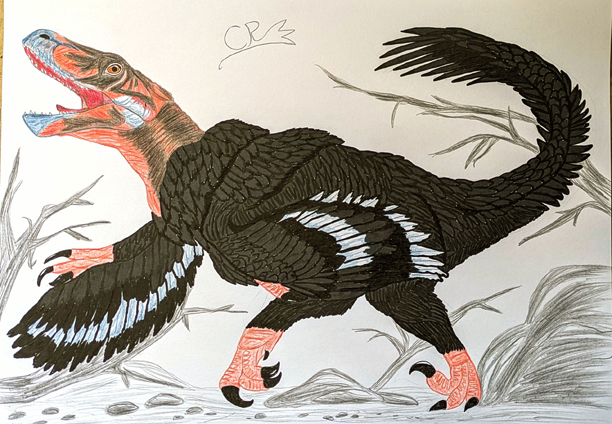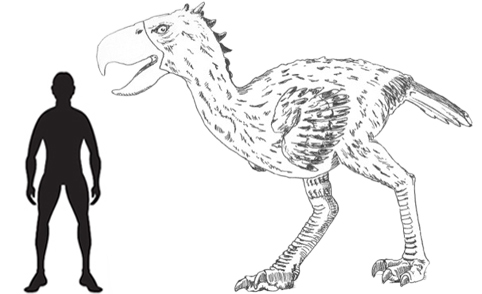Drawings of dinosaurs and other prehistoric animals either done by team members or sent into Everything Dinosaur.
An Exclusive Austroraptor Illustration
A drawing of the giant South American dromaeosaur Austroraptor has been commissioned. This was done to celebrate the arrival of the new Austroraptor cabazai model. This colourful figure is new for 2025 and is the latest addition to the Wild Safari Prehistoric World range. Austroraptor was formally named and described in 2008 (Fernando Novas et al). Dr Fernando Emilo Novas has named and described several dinosaurs from his native Argentina. For example, ten years before the formal scientific description of A. cabazai, he named Megaraptor (M. namunhuaiquii).
When Novas described Megaraptor he thought the fossils represented a huge dromaeosaurid. It was thought at the time that an enormous fossil claw was from the second toe. Typical of a dromaeosaurid, but much larger than the claws associated with most dromaeosaurid taxa. However, subsequent analysis has revealed this claw to actually be a finger claw rather than a toe claw. Megaraptor was not a giant dromaeosaurid. However, with the formal description of Austroraptor, Argentina had its first giant “raptor”.
Austroraptor cabazai remains the largest dromaeosaur known to date from the Southern Hemisphere. Body size estimates vary. However, it could have reached a length of around six metres.
Picture credit: Everything Dinosaur
To view the range of Wild Safari Prehistoric World models in stock: Wild Safari Prehistoric World Figurines.
The Austroraptor cabazai Model Drawing
Everything Dinosaur commissioned the drawing so that it could be used in an Austroraptor fact sheet. For nearly all the prehistoric animal figures that the company sells, they send out a free fact sheet. The fact sheet provides information about the prehistoric animal. Furthermore, a scale drawing is included.
Sue from Everything Dinosaur commented:
“We like to inform and educate. Hopefully, the free fact sheets that we send out help. In addition, we get sent lots of emails asking about dinosaurs and fossils. We do all we can to answer these queries promptly. The Austroraptor drawing will permit us to create a scale drawing of this Late Cretaceous Argentinian dromaeosaurid. This scale drawing will then feature on our new Austroraptor cabazai fact sheet.”
Visit the Everything Dinosaur website: Dinosaur Models and Prehistoric Animal Figurines.


















